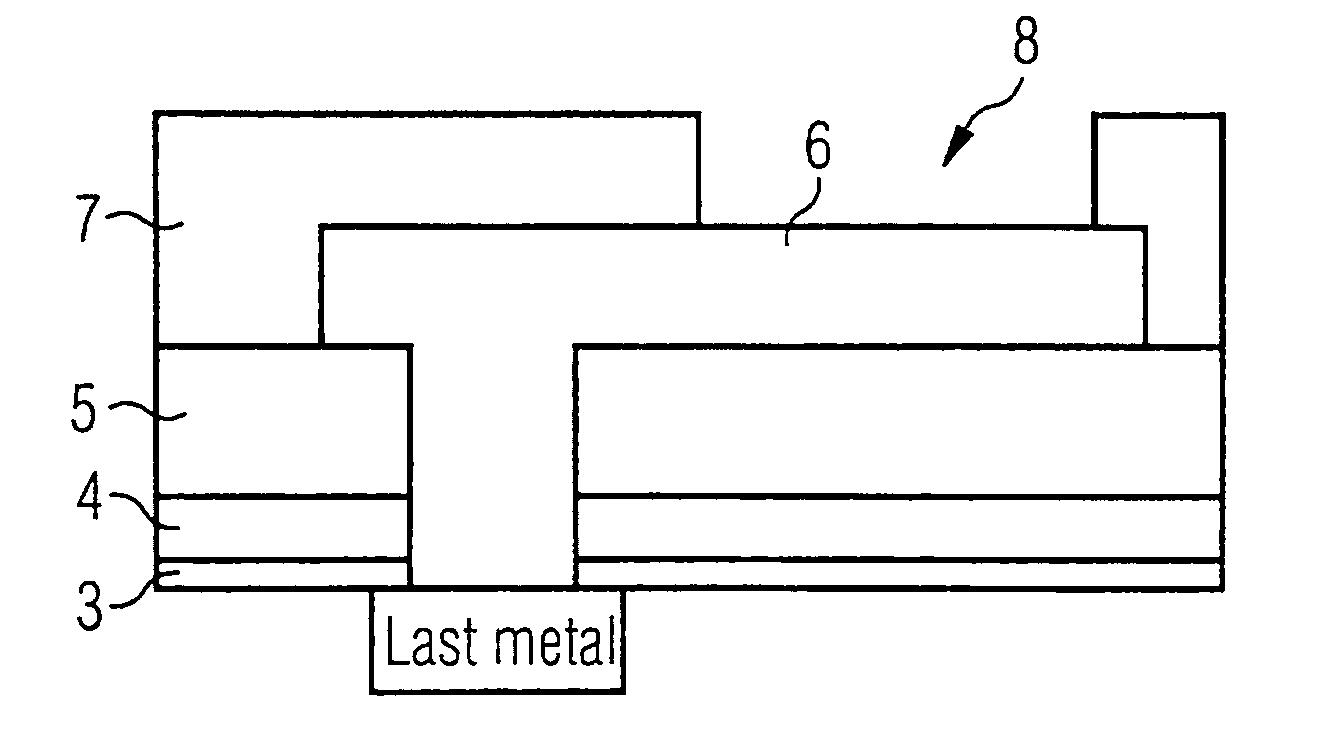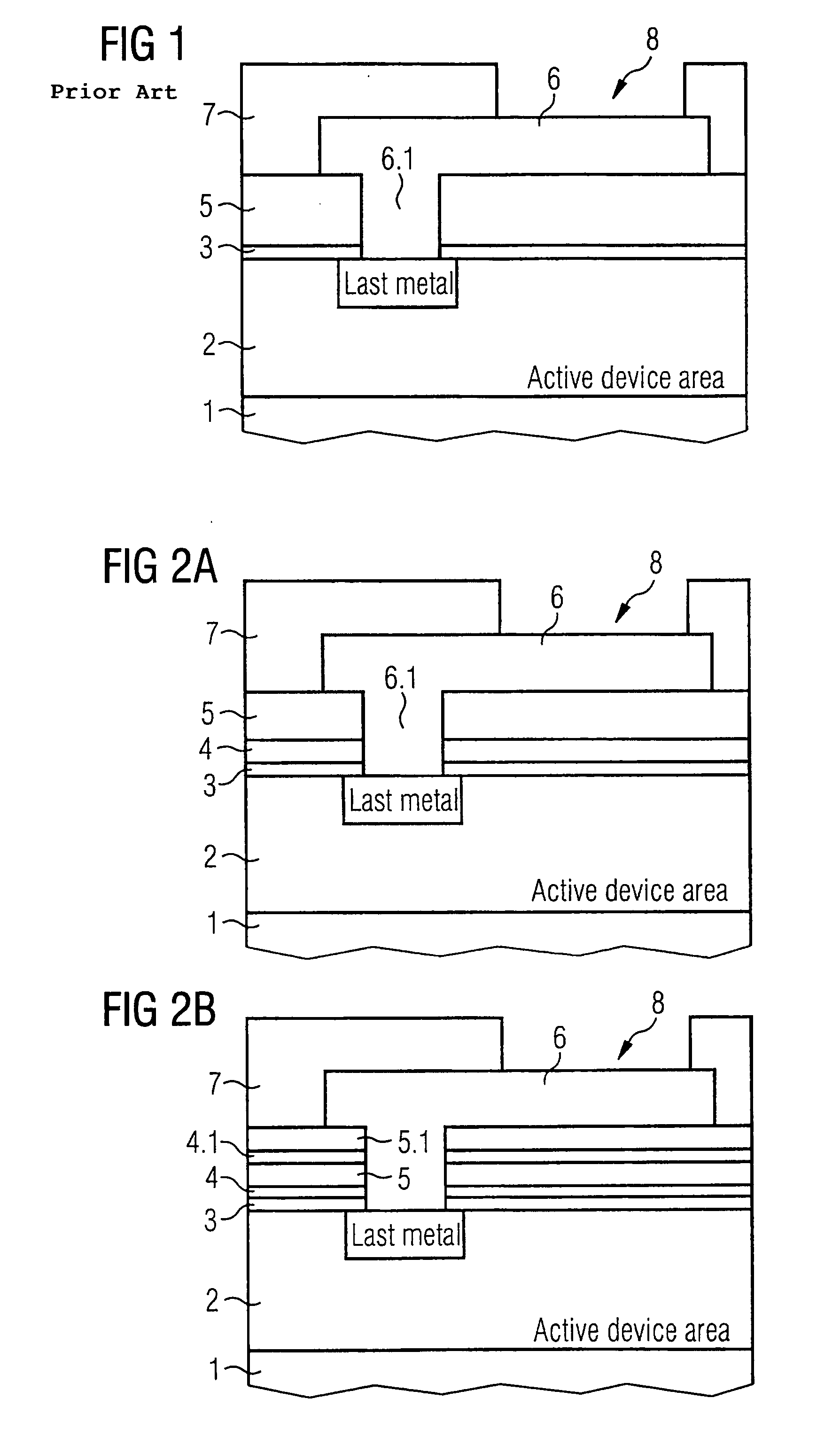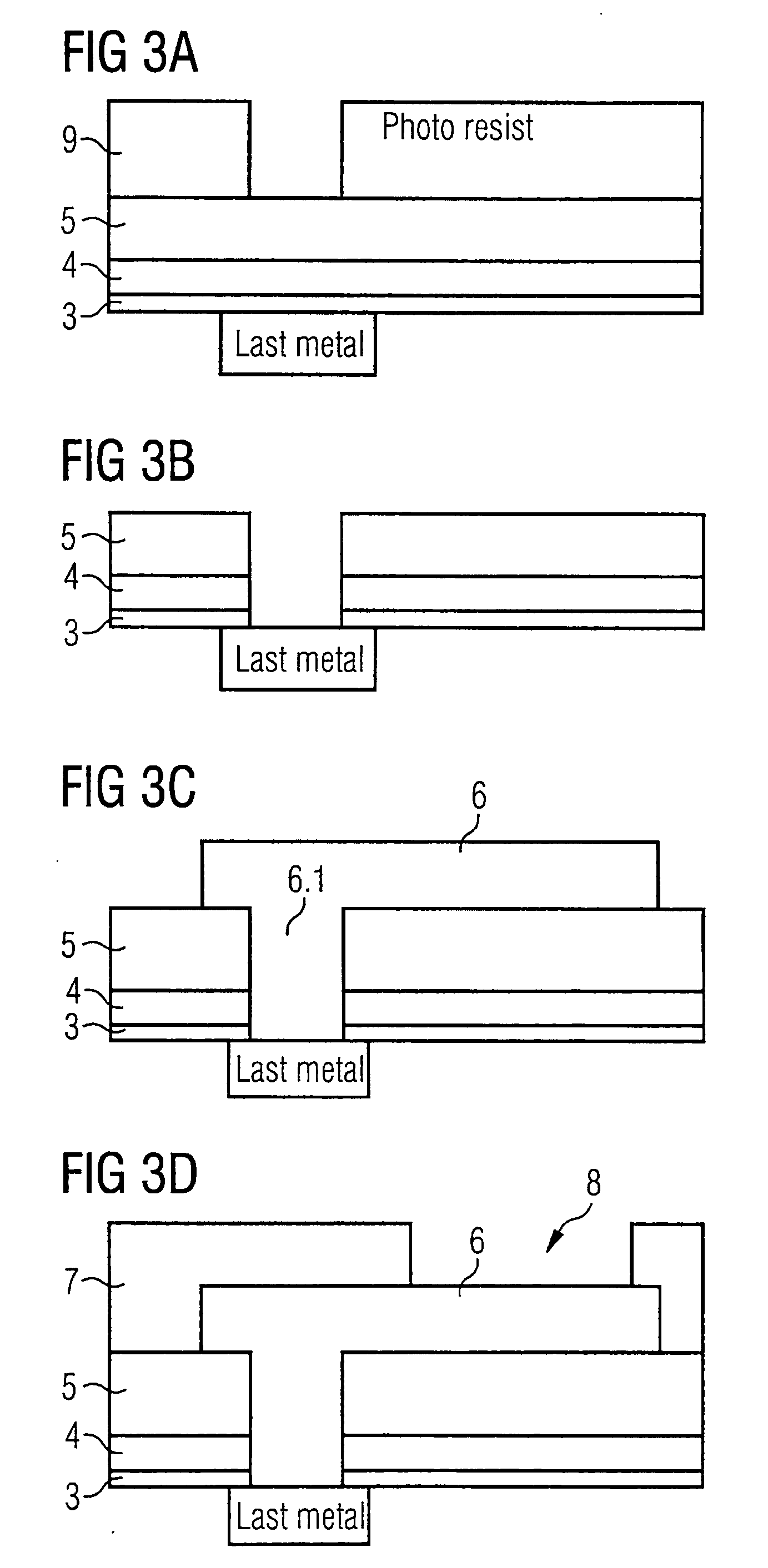Final passivation scheme for integrated circuits
a passivation scheme and integrated circuit technology, applied in the direction of electrical apparatus, semiconductor devices, semiconductor/solid-state device details, etc., can solve the problems of cracks in the passivation layers damage to the al pads and the underlying rigid passivation layer, and inability to crack the passivation layer below the probing area, so as to protect against crack related reliability failures and high resistance to crack propagation
- Summary
- Abstract
- Description
- Claims
- Application Information
AI Technical Summary
Benefits of technology
Problems solved by technology
Method used
Image
Examples
first embodiment
[0028]FIG. 2, which includes FIGS. 2A and 2B, and FIG. 3, which includes FIGS. 3A-3D, show the invention with the novel final passivation scheme. This scheme provides for highly reliable final probing.
[0029] The device of FIGS. 2 and 3 includes a wafer or substrate 1 that is preferably formed from silicon, although other semiconductors such as silicon germanium or gallium arsenide can be used. The device and interconnect layers are collectively referred to as the active device area and labeled with reference numeral 2. This region includes the active devices (e.g., transistors), passive devices (e.g., capacitors, resistors), and any interconnects (e.g., multilevel copper damascene). The last level interconnect capping layer 3 is explicitly shown. The capping layer 3 commonly comprises SiN (e.g., Si3N4) with a thickness between about 50 to about 200 nm. Other capping layers such as SiO2 and SiON can also be used.
[0030] A buffer layer / crack stop layer 4 is deposited over the capping ...
second embodiment
[0034]FIG. 2B shows the invention with multiple buffer layers / crack stop layers 4, 4.1 and passivation layer 5, 5.1 between the last upper metal in the device and interconnect layers 2 divided by a last level interconnect capping layer 3 and an aluminum probe / wire bond / flip-chip pad 6.
[0035] The Al probe / wire bond / flip-chip pad 6 is connected over a via 6.1 through the passivation layer 5, 5.1, through the buffer layer / crack stop layer 4, 4.1 and through the last level interconnect capping layer 3 with the last metal of the device and interconnect layers 2.
[0036]FIGS. 3A-3D illustrate a sequence showing the steps to realize such a buffer layer / crack stop layer 4 below the aluminum probe / wire bond / flip-chip pad 6.
[0037]FIG. 3A presents the last metal in the device and interconnect capping layer 3 covered by a last level interconnect cap layer 3, e.g., a 70 nm SiN cap layer. Over this cap layer is deposited a 200 nm SiLK™ buffer layer 4 by spin-on and cure and over this layer a pass...
PUM
 Login to View More
Login to View More Abstract
Description
Claims
Application Information
 Login to View More
Login to View More - R&D
- Intellectual Property
- Life Sciences
- Materials
- Tech Scout
- Unparalleled Data Quality
- Higher Quality Content
- 60% Fewer Hallucinations
Browse by: Latest US Patents, China's latest patents, Technical Efficacy Thesaurus, Application Domain, Technology Topic, Popular Technical Reports.
© 2025 PatSnap. All rights reserved.Legal|Privacy policy|Modern Slavery Act Transparency Statement|Sitemap|About US| Contact US: help@patsnap.com



